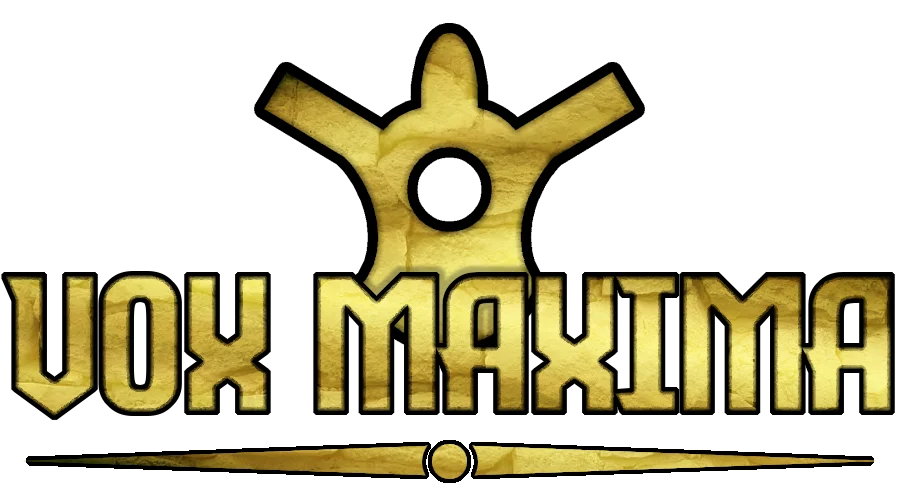The world is broken; wounded, and one in seven in the entire empire expunged. A billion are missing and amongst them were workers, guards, scholars — and those missing people have left a wound across the entire world. Thankfully, the strong leadership, the head of the Kraivh Assembly, have been able to hold the institutions of the world strong in this great, yawning disappearance.
The armies of the Kraivh defend the borders. The Osteotheruges pick through the graves and memorials, trying to find the truth that has been lost. And even Emperor Kraivh, The Eternal Undying himself has assigned his closest blood to the quest of solving the great question, beginning the quest meant to solve that mystery, and in the process, bring back a satisfactory answer to be spoken in in the Vox Maxima.
Vox Maxima is a custom magic set created by Talen Lee. It’s composed of 187 cards, with 71 commons, 60 uncommons, 41 rares, and 15 mythic rares. Vox Decima is a custom Magic: The Gathering set, with at least one card spoiled a day, on Cohost, Kind.Social, and the r/custommagic subreddit.
WOTC Employees: This post in full presents unsolicited custom Magic: The Gathering card designs, which I understand current employee practices forbid you from looking at unsolicited. You shouldn’t be here!
And now, the gallery of cards:
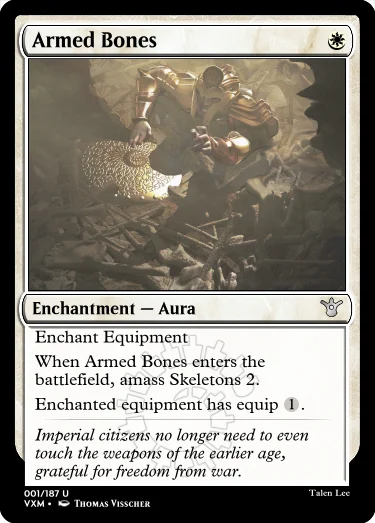
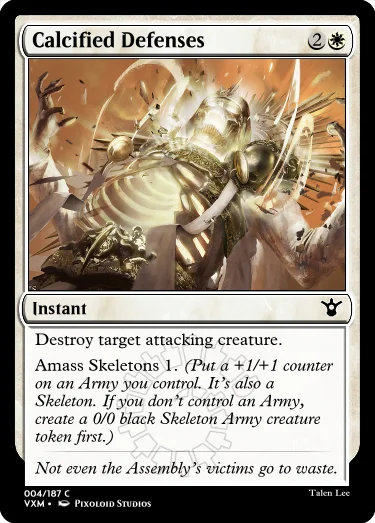
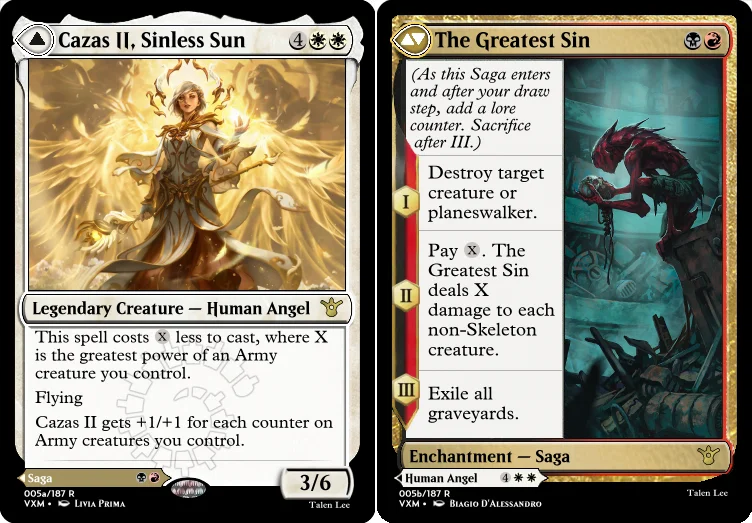
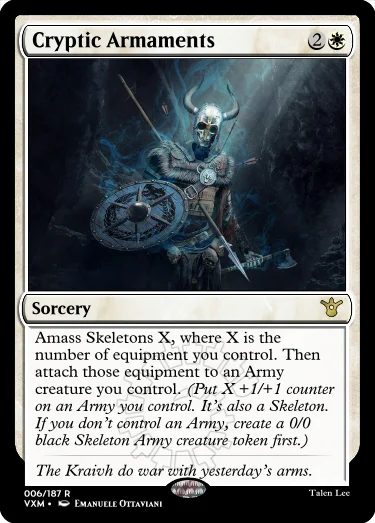
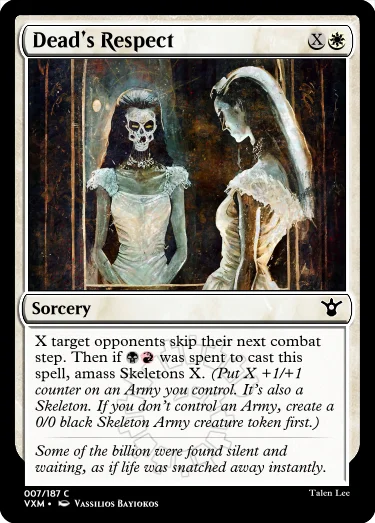
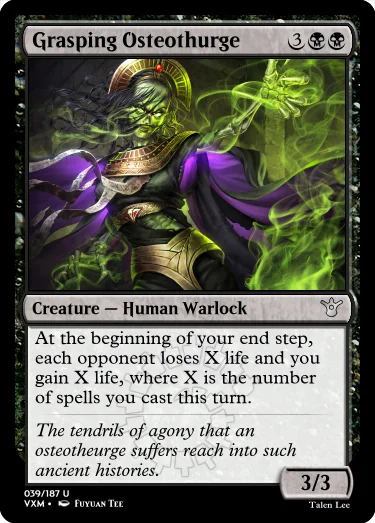
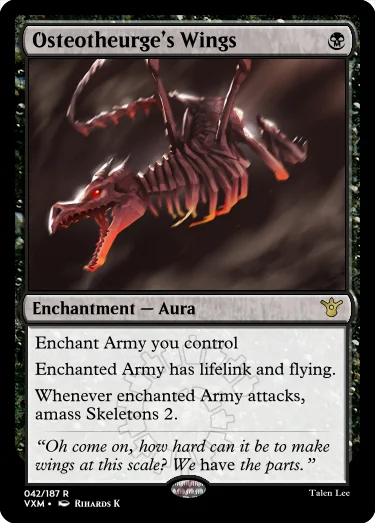
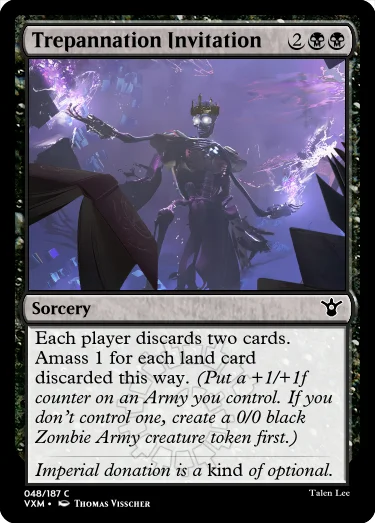
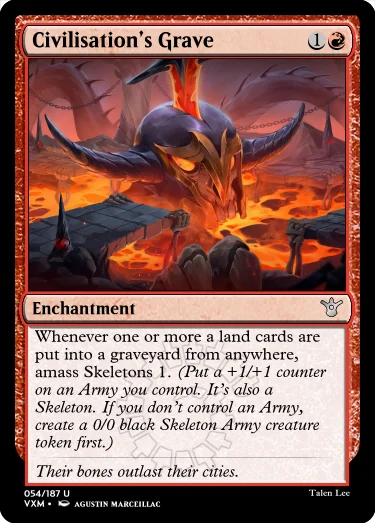
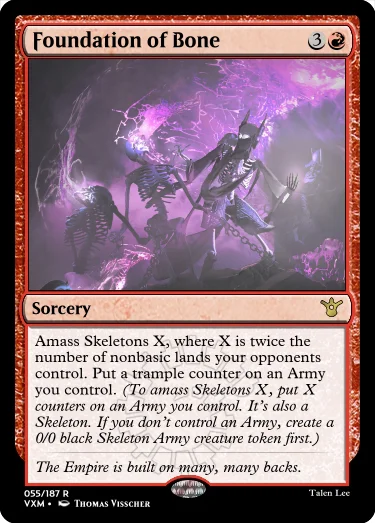
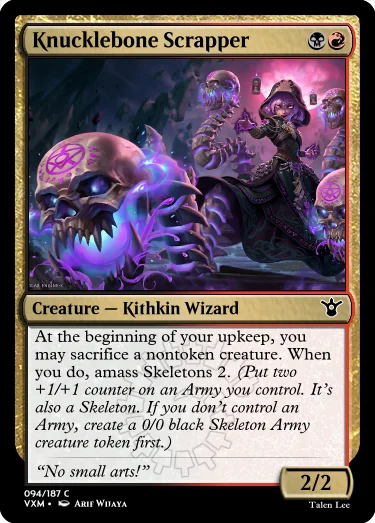
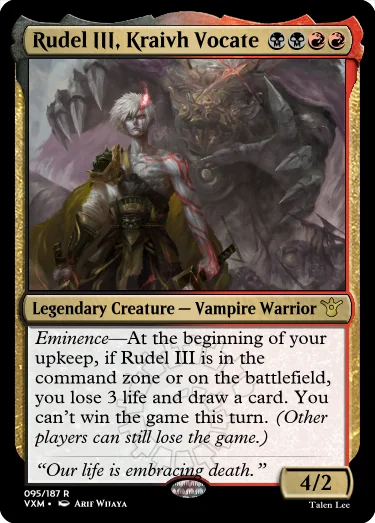
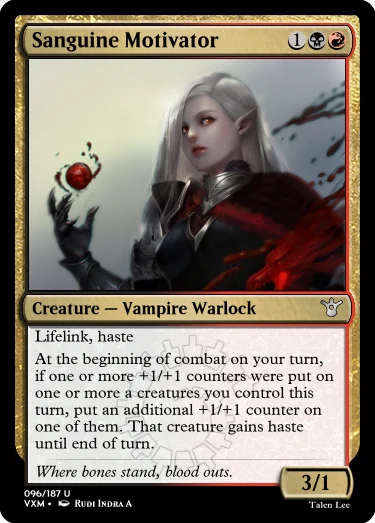
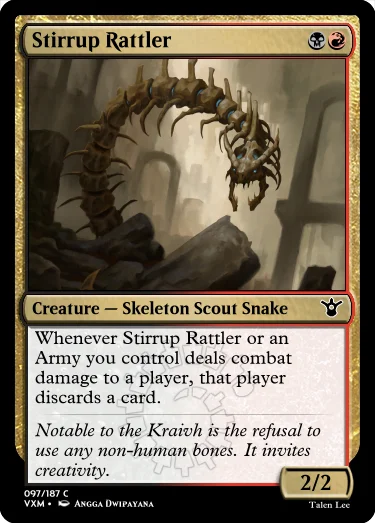
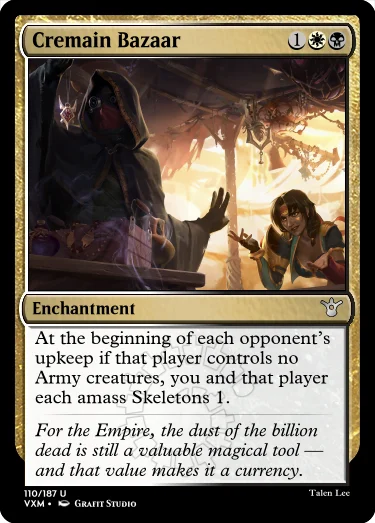
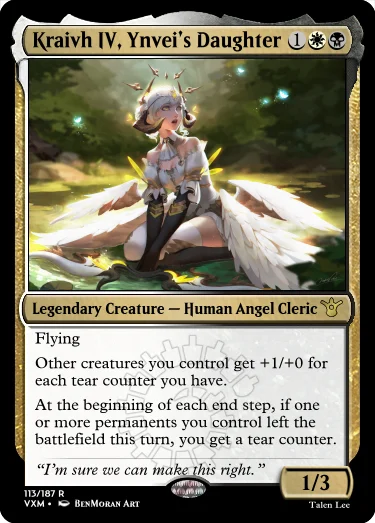
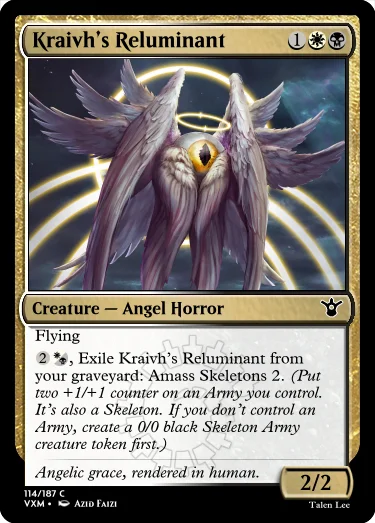
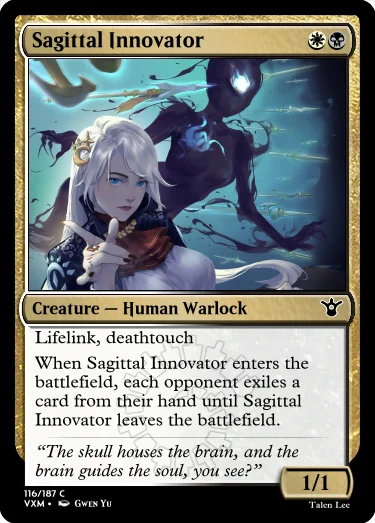
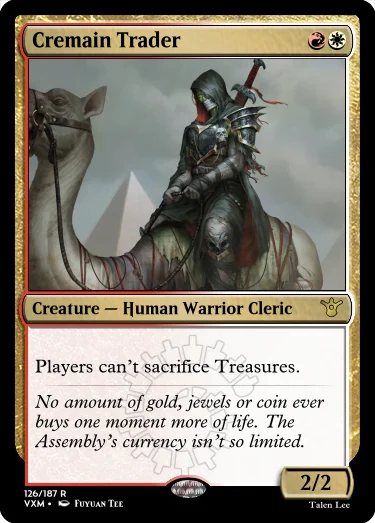
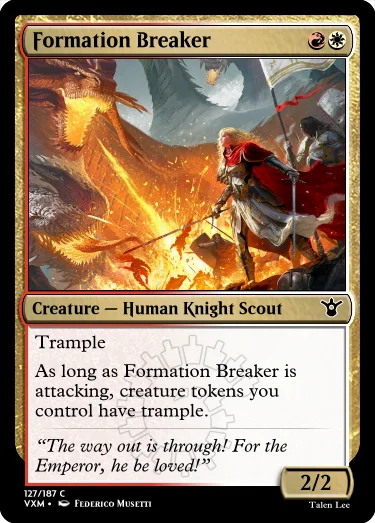
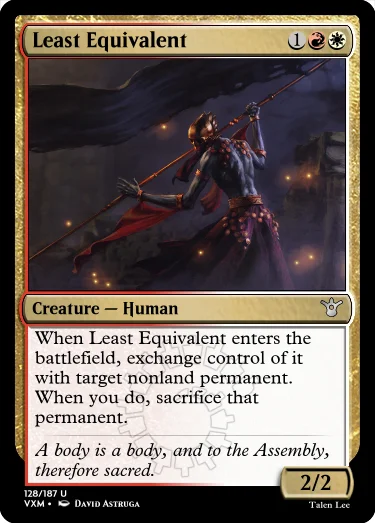
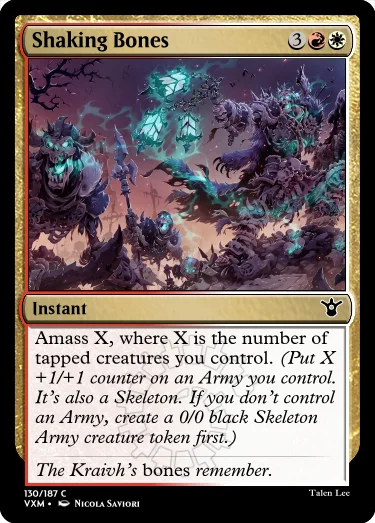
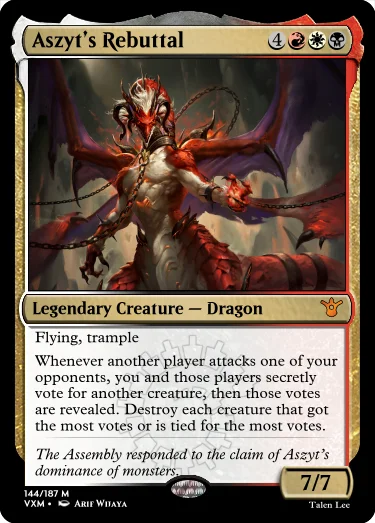
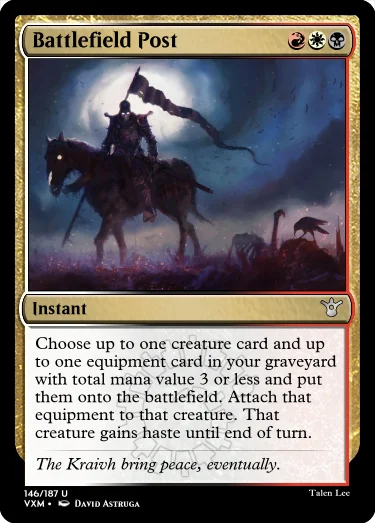
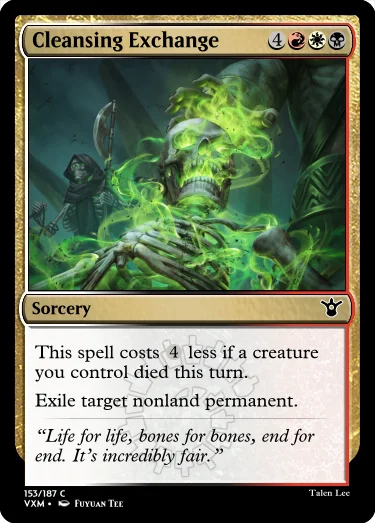
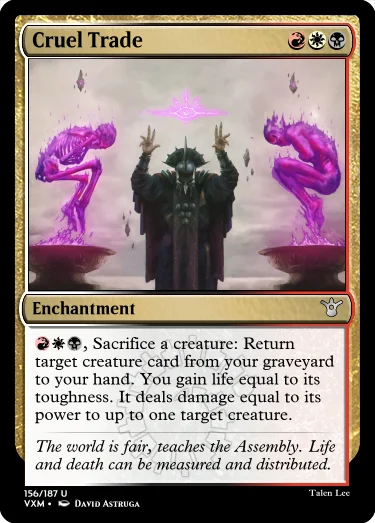
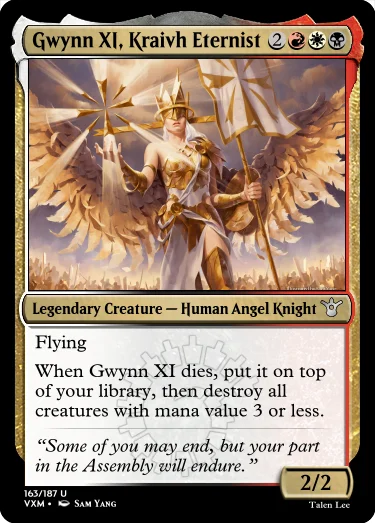
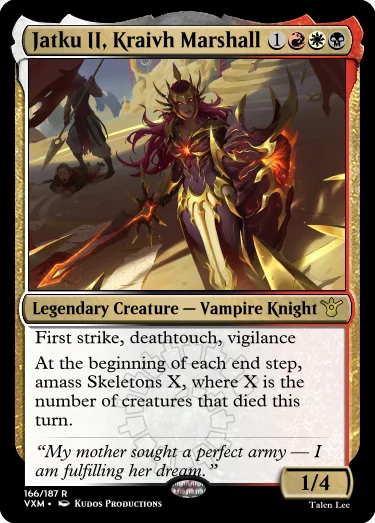
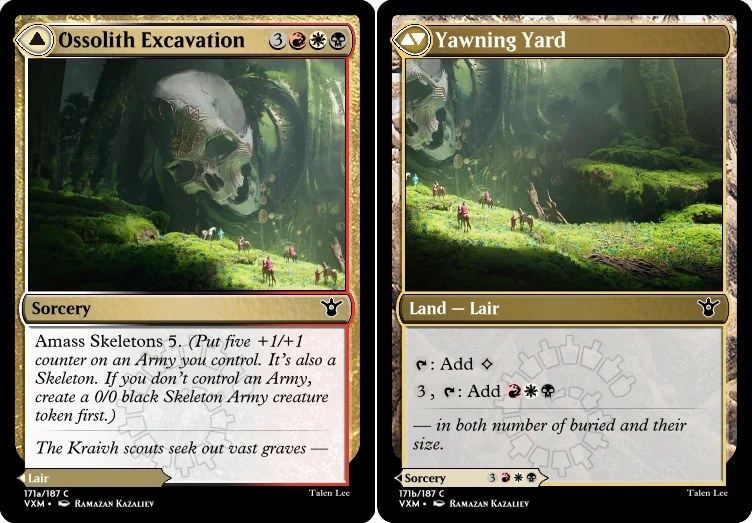

The Empire being what it is, is organised and regulated, and every source of power and authority within it owns some of that Imperial Blood to it; important figures like Rudel III, Gywnn XI, and Aszyt’s Rebuttal stand on the borders of the Empire, opposing those factions that seek to encroach on the stability the empire offers. In the empire, the use of skeleton servants has successfully met the needs of the missing billion people, and also means that most citizens that aren’t necromancers don’t need to care about the works or will of the military at all. This is a necropolity, a space where the ruling power is directly fed into the necromancers who control access to life and death. People are healed, even from death, and cared for by the great machinery of the Empire. Even the dead can contribute to the Empire, where bones are valued, and the Emperor (be he loved) stands at the head offering everyone stability in this time of strange missing memories. Nobody remembers him taking power, but the empire is there and with his immense responsibility upon him, he has dedicatd effort to ensuring everyone has
These cards represent (mostly) the cards relevant to the Kraivh Assembly, the church worshipping the Necromantic god-emperor Kraivh, who holds the world together despite the loss of a billion lives. He is the Vox Maxima, and they speak with his voice. The Assembly is its top echelon – the necromancers (osteotheurges) that the world leans on. It’s notable how the aesthetics of necromancer valued here; skeletons are treated as proper and clean forms of necromancy, but zombies? You won’t find a zombie in the Kraivh Assembly. No, that’s untidy.
What these cards are trying to present, in world building and mechanical terms, is the idea of a massive, ponderous, institutionally supported empire. There are people who operate within that empire, there are individuals who are given power, but also that power is represented as being dynastic, and interconnected, and ultimately hierarchal. The Kraivh faction in its core is composed of a sense of religious order (white), a sense of emotional need to survive (red), and a willingness to do anything to survive (black). Ultimately, the entire Empire is built like a Platonic philosopher-king perspective; the empire is the artwork of a powerful individual, driven and focused on expressing himself, in the form of his empire, where art and poetry and infrastructure and contribution are all highly valued. Still, the emperor’s ego is overwhelming. There are parts of the Empire that are guarded by and respond to things that he specifically thinks of as his against his ego. Which makes sense, I mean he’s a god-emperor of a skeleton army.
This also introduces a card that’s going to be part of a cycle, with Cazas II. She is one of a small number of cards in the set with no flavour text, and whose card is meant to represent a character who exists in this world, is okay with her place in it, but in the course of the story learns about some event, something that was kept hidden, represented by engaging with the saga. This is a card made for commander, with the ability to be played or replayed as conveniently. In Cazas II’s case, she is a member of the ‘core group’ that works together to pursue the story with Niamh, along with her other sisters, and Cazas is the one who, in the course of the story learns about the event known as the Greatest Sin.
The Greatest Sin, as it might not surprise you, was a mass human casualty event in which the Emperor used for some purpose that related to the empire. But of course, knowing about this, finding the proof of this, is not necessarily the same thing as working out what it means, or how she’d react because of it. And it’s important, Cazas is a white character who has a red-black strain to her – so she may be accepting of the greater good that the Emperor follows, or using the religion of the Emperor as her guidance here.
Some specific card notes:
- Cruel Trade is an engine card inspired by Malevolent Awakening. I like when there’s an uncommon engine card,
- I do think that some cards like Cleansing Exchange can be printed at common. I don’t like staple removal being rare, so I tried to design a version that could be non-disruptive for common environments.
- The wording on battlefield post feels, to me, hard to parse – the vibe is that you can get a creature and an equipment, if their total mana value together is 3.
- I only just now realise that there’s multiple instances of simple treasure hate. Weird.
- Rudel III is our second Eminence character. This is a really specific idea, the notion of what can a suicide aggro deck look like in commander? The aim was to make a character whose whole thing was to make it so that this card wasn’t just an automatic combo option, and so, the deck he fuels has to be able to win the game through making all other players lose. The wording is specific: ‘you can’t win the game’ means ‘you win the game’ effects don’t work. You still win the game if you’re the only player left – other players can still lose.
- ‘Cremains’ is a real word, it’s the term used for the leftover ash and bone fragments from when a body is burned.
- Kraivh IV represents the challenge with naming and name length. She even has had to have her counter type changed just to make the name shorter!
